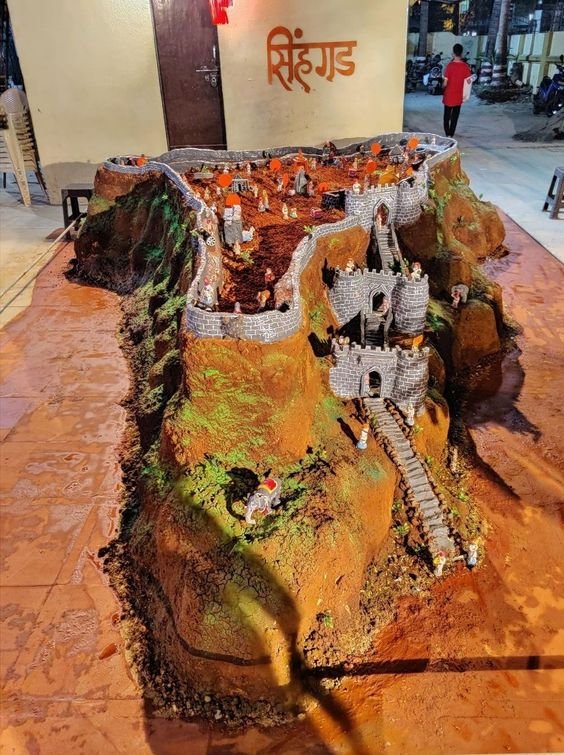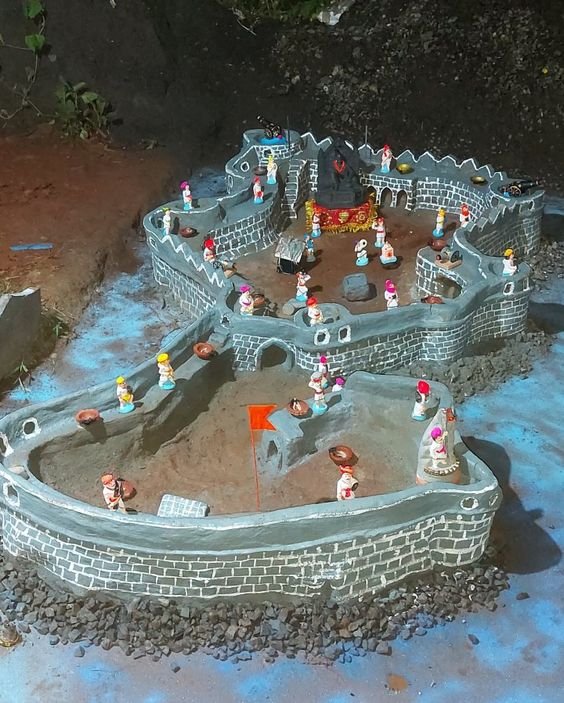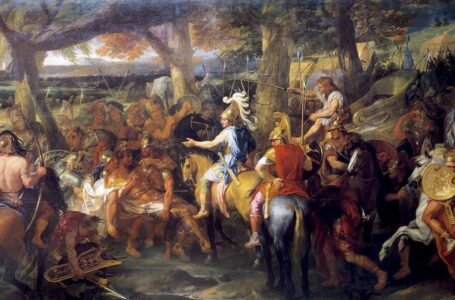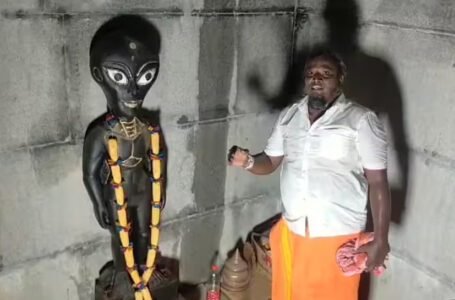Killa Making: A Tradition Rooted in History

Killa-making refers to the craft of building tiny-scale models of forts. In Maharashtra, this is one of the dissolved customs associated with Diwali celebrations. The Killa, or mini fort, is built by children and their families to depict historical bastions built by Chhatrapati Shivaji Maharaj, the iconic ruler of the Maratha Empire. This tradition not only clubs creativity into their celebrations but also fosters a sense of community through historical awareness and collaboration between those performing together.
Over the years, Killa making has evolved from a simple craft to a complex artistic expression. It is a tribute to the bravery and tactical genius of the Maratha Empire. The small forts become part of the village festivities during Diwali celebrations, revealing the talents and creativity of the residents as they enjoy each other’s skills.

History of Killa Making
The original Killa making craft is found to have arisen from the 17th century Maratha Empire. Chhatrapati Shivaji Maharaj was widely revered for constructing and safeguarding a multitude of forts along Maharashtra; some were layered on hills, cliffs, and coastlines. Some forts, like Raigad, Pratapgadh, and Sinhagad, and Shivneri served during their struggle against the Mughals and other invaders as symbols of freedom, resistance, and pride for the Marathas.
After the time of Shivaji Maharaj, his legacy was preserved through songs, tales, monuments, and, importantly, Killa making. In the changed years’ time frame, children began making these small forts during Diwali celebrations in honour of the valour of the Marathas and the connection to heritage, to honour them. Parents and the community promoted such a practice as a way of education to transmit historical knowledge, hence ensuring that the stories of the Maratha Empire would continue to be nourished. Killa making, in time, would become a vital part of the Maharashtrian Diwali celebrations, depicting the defence of righteousness and gratitude.

Symbolism in Killa Making
Where Killa making has derived and continues to develop its various aspects based on historical accounts, it has links to the festival of Diwali as well. The festival of Diwali is intertwined with numerous stories such as that of the return of Prabhu Shri Ram to Ayodhya after killing Ravan, which gives Diwali a connotation of virtue for the triumph over evil, whereas in the case of Maharashtra, it stands proud and erect embodying Shivaji Maharaj’s battle victories against oppression. Henceforth, the construction of these forts during Diwali echoes the essence of the festival, in which individuals strive against all odds to keep their values safe. Each fort figure represents the power and endurance required to sustain justice from the now-dwindling spirit of the people who have not forgotten Shivaji’s forts, although they lacked in protection from invaders. To put this into a wider context, the fort is symbolic of upholding personal and social interests. While Diwali indicates a new beginning, these symbolic forts are made to enact the ideal of common protection to prevent the loss of joy, prosperity, and morality.

The Celebration and Making of a Killa
Killa building is a gifted and imaginative craft. Traditionally, children would build little forts with the use of mud, clay, stones, and leaves they found in the vicinity. Nowadays, materials like thermocol sheets, cardboard, and paper-mâché are employed to improve detail and longevity.
First, the builders usually choose a fort which should be Raigad or Pratapgadh. Usually, they refer to historical pictures or paintings to correctly depict the features and characteristics of the given fort. Next, the beginners make a base on which wooden planks and thermocol are put to make the stand, ensuring stability. This base often resembles a hill or plateau, typical of actual landscapes on which forts were constructed.

Clay or cardboard sheets are built into walls, bastions, and watchtowers which are representative of the defensive works of the Maratha forts. Other features, such as little figurines and flags and howitzers and ladders, breathe life into the model. Miniature lamps and diyas adorn a completed Killa in celebration of the festival Diwali.
Many local competitions during Diwali give children the opportunity to display their talents by making intricate and elaborate models. These competitions develop teamwork, innovation, and historical knowledge amongst the participants and promote community interaction.
Accompanied by folk songs, storytelling, and games to celebrate the legacy of Shivaji Maharaj, this building of Killa has become a practice of quite a few. The elders pass down the tales of his bravery, strategy, and diplomacy, arousing a sense of inspiration and patriotism in the children.

The Killa-making competitions take place in both schools and communities, with jewel awards announced for the winners. However, no one goes home empty-handed as all the other winners too are included in the report. These contests serve as the melting pot of exchange and bring the children in touch with their cultural roots in the most colourful way.
Impact of Killa Making in Maharashtra
While making Killas has been one of the foremost activities in this context to portray the cultural heritage of Maharashtra, it anchors younger generations to their roots, giving interpretation towards the legacy of valorous Shivaji Maharaj. This tradition imparts to mankind virtually the outlooks of being courageous, cooperative, and pious towards history.

Children learn the rudimentary concepts of architecture and understand the importance of tactical thinking. In fact, a good skill in planning is probably one of the most fundamental in the construction of real forts. Killa making has a great influence on kids by augmenting their creativity and enhancing their inventiveness toward problems while thinking outside the box. Many schools have also begun introducing Killa-making projects within their syllabus to instil experiential learning.
This activity thus builds a spirit of togetherness. Families and neighbours join hands to make forts for Diwali, sharing stories and fun. This adds to social bonding and also proliferates a spirit of unity.
With the burgeoning interest in Killa-making, many local enterprises have sprung up to provide Killa-making including thermocol sheets, paint, and figurines to make family bonding easier. However, there’s a growing knowledge regarding the consequences of using non-biodegradable materials; hence, it is eco-friendly that groups are now considering as an option.

The Legacy of Killa Making
Although this art of Killa making sprung into the forefront a few centuries ago, this art has endured all these years, keeping itself abreast with changing cultural influences. It is almost a living homage to Shivaji Maharaj and the Maratha Empire, reiterating the notion of self-sufficiency, valour, and strategic wisdom. This action is necessary to convey history and values to posterity.
Today, other institutions, schools, NGOs, and community-based organizations work together to encourage participation in their communities by getting all children regardless of their background or skill level involved. Many contemporary Killa makers now build fort designs based on various Indian forts to honour the architectural diversity of India.

Conclusion
The creation of Killa for Diwali is a relish of art, history, and festivity. Rooted in the legacy of Chhatrapati Shivaji Maharaj, Killa carries deep-seated values connected to Maharashtra’s identity while fostering artistic creativity and steadfastness of community. In tandem with the constant change and evolution of the world, this tradition blooms anew as a reminder of honouring the history and passing on those values to future generations.
Killa making is a responsible celebration as more and more people adapt to the art of ecologically friendly ways. Therefore, the persistence of this tradition is still maintained in the foreseeable future. Diwali in Maharashtra is incomplete without the ecstasy and fervour of constructing small forts, embodying the phrases of strength, unity, and hope that light the way to a better future.


